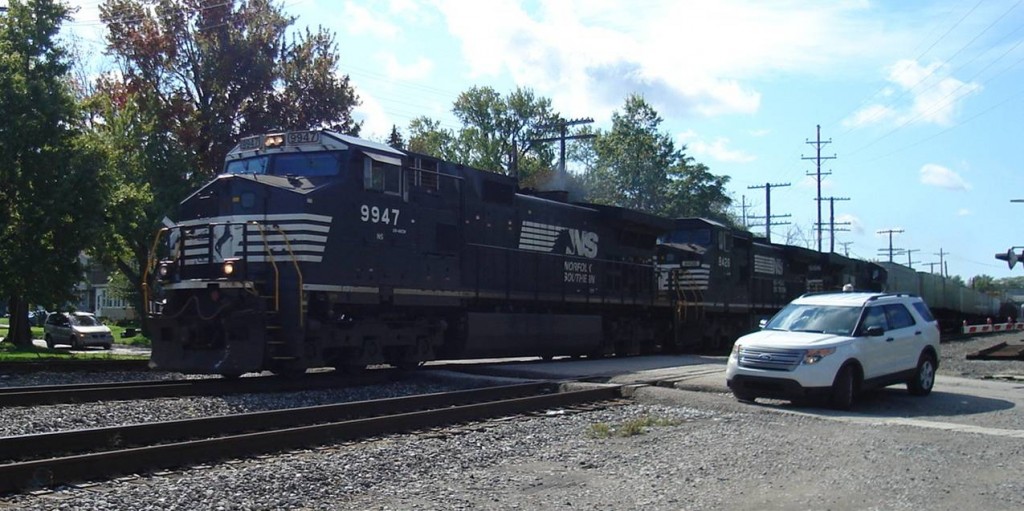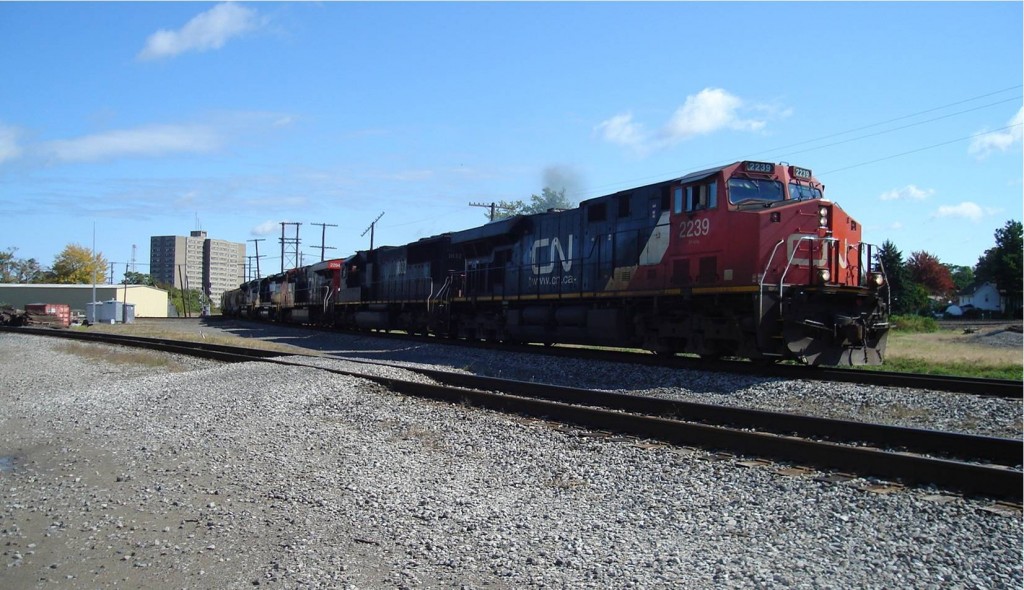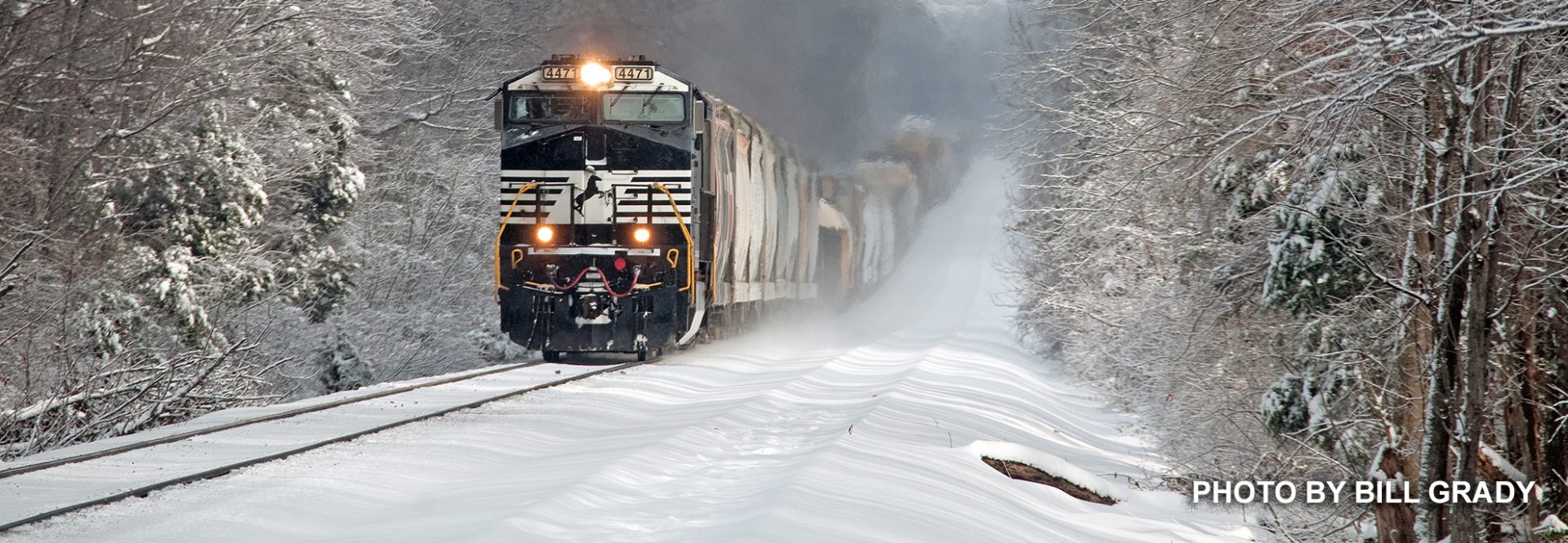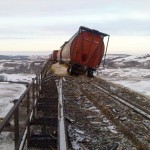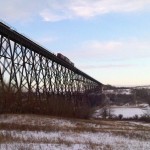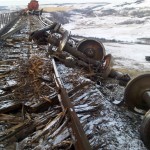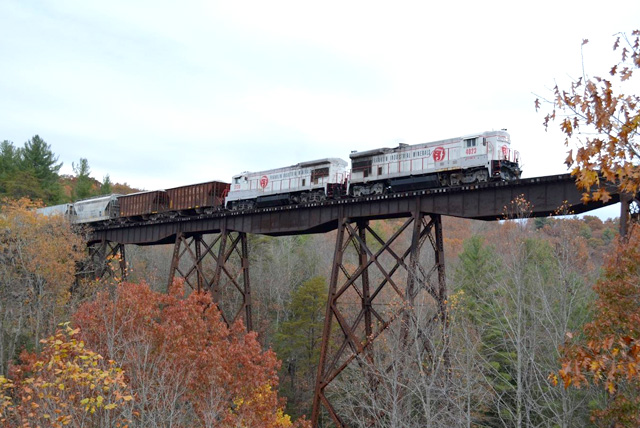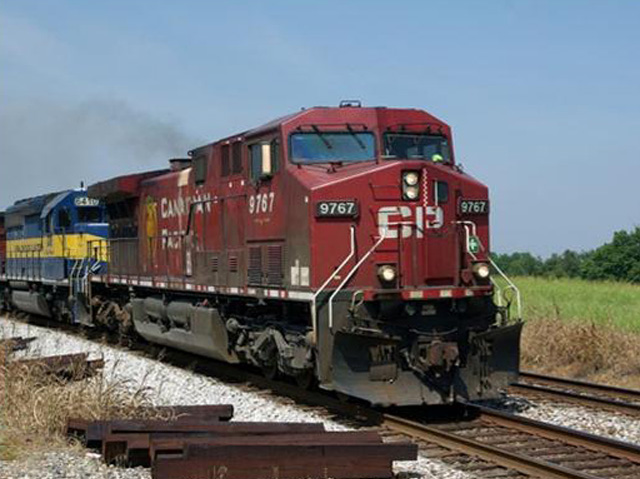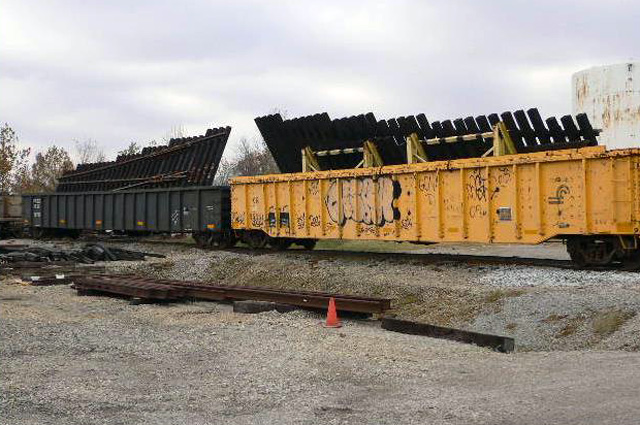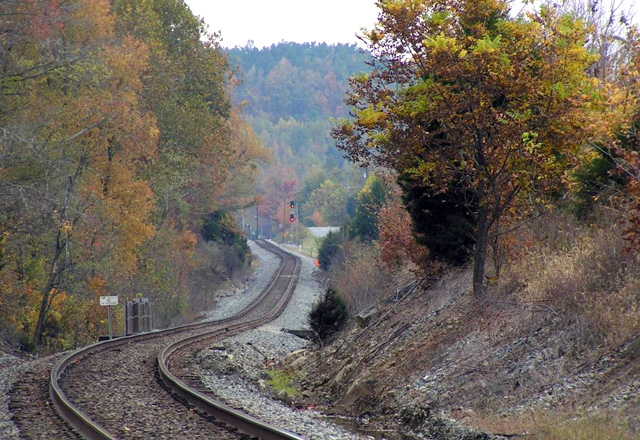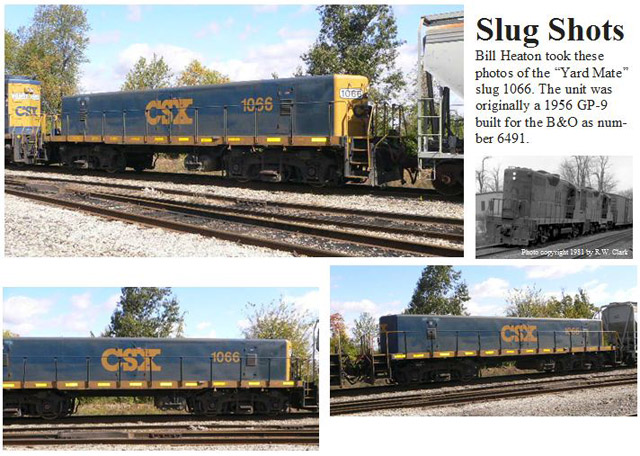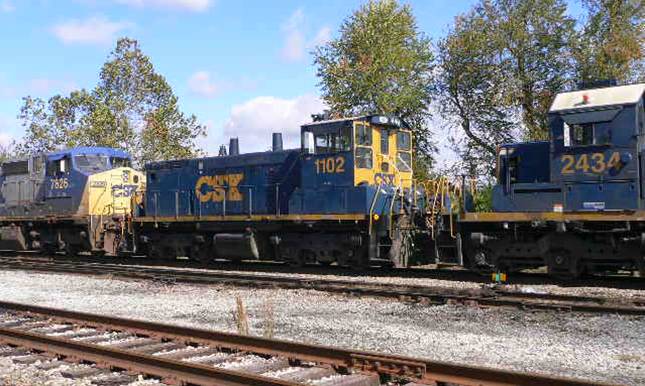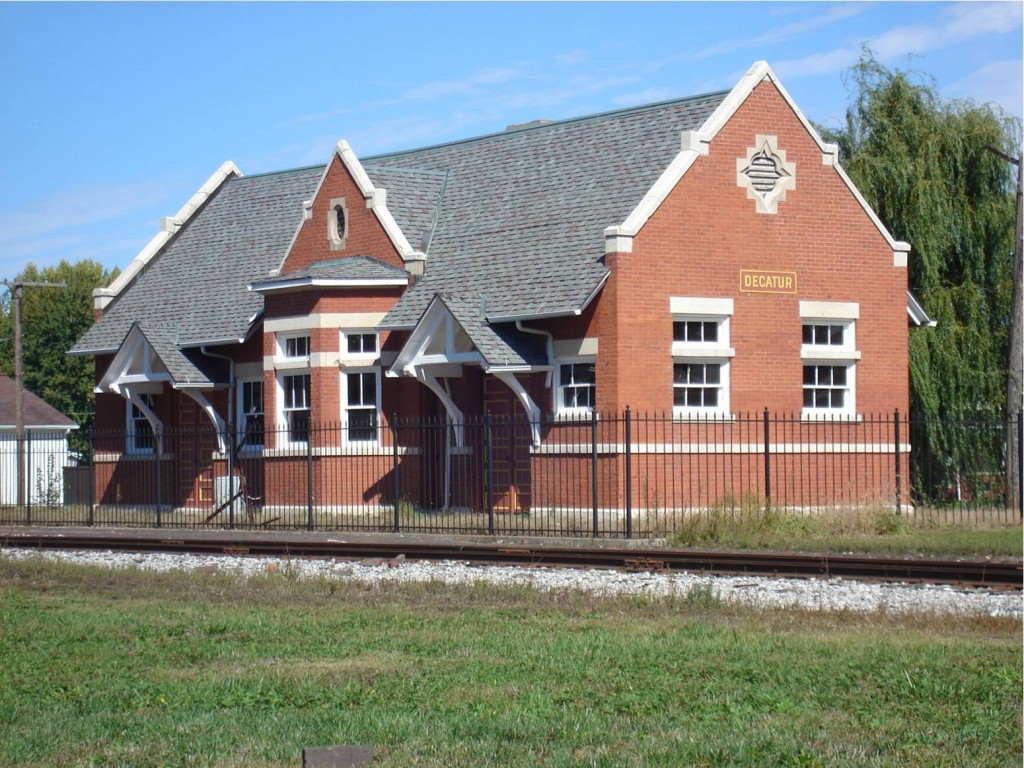
Category: Photo Section
Photos from the Pennyrail Newsletter
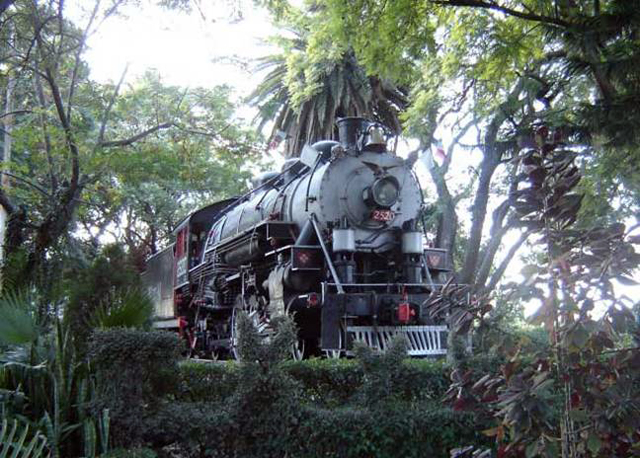
CN 301 on the Wainwright Sub, derails on the Fabyan Bridge over the Battle River near Wainwright, Alberta, Canada, January 2012. Photos submitted by Andrew Futrell.
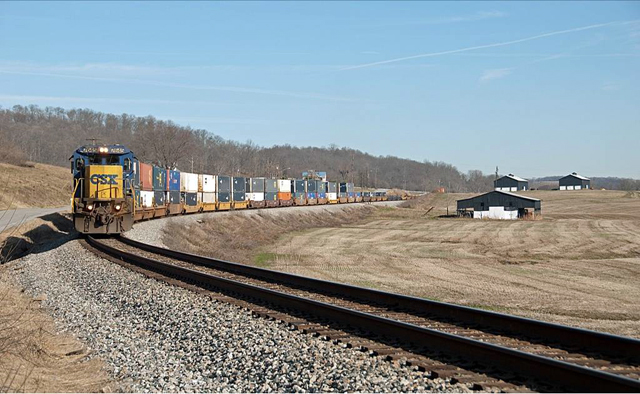
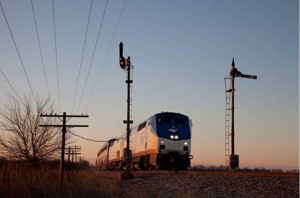
Left: AMTRAKS Hoosier State is racing towards Indianapolis splits the semaphores. Nearly all of America’s semaphore signals are gone. They had motors and mechanical moving parts, the bane of management. Newer models have LEDs and other gizmo’s and are driven by computer chip technology. So capture those digital images soon folks.
This line is the former MONON, officially named the Chicago, Indianapolis and Louisville Railroad, how dull. No wonder they used the Potawatomi Indian word meaning “tote” or “swift running.” The Monon rails connected Chicago with Indianapolis, and Michigan City and Louisville, forming a big “X.” The City of Monon marks the “X.” Indiana claimed the railroad as its own, calling it the Hoosier Line.
Someone even coined a poem: Up and Down the Monon, everything is fine, cause that root’n, toot’n Monon, she’s a Hoosier Line! What I miss about the semaphores is that as a railfan trekking around the country you could see the position of the semaphore from adjacent highways. The color indicator was not pertinent. If they were pointing toward the sky, tracks were clear. If one was horizontal there was traffic nearby, either coming or going.
(Now maybe one of you can tell me why one semaphore is pointed, and the other squared ?? Really, I don’t know.) The photo was captured by my friend and videographer Tim Lab of Owosso, Michigan. MONON rails have morphed via mergers into today’s CSX Transportation.
Submitted by James Futrell
These photos were at a train derailment in Fulton, Ky. The derailment (we know now) started at a broken rail the car derailed and took out some MOW equipment stored on an adjoining track. As the car continued under the bridge it took out several switches and rail before coming to a stop south of the bridge. In the preceding morning pictures you can see a group in the lower left corner of one shot assessing the situation before cleanup began. I’m told that the north bound Amtrak had just cleared this track before train 194 used it going south and derailed. The amount of work performed between 8 AM and noon is nothing short of amazing. It looks like chaos but everyone has probably done this many times before and hit the ground running. The 5 or 6 train backlog was gone by noon.
[imagebrowser id=4]
